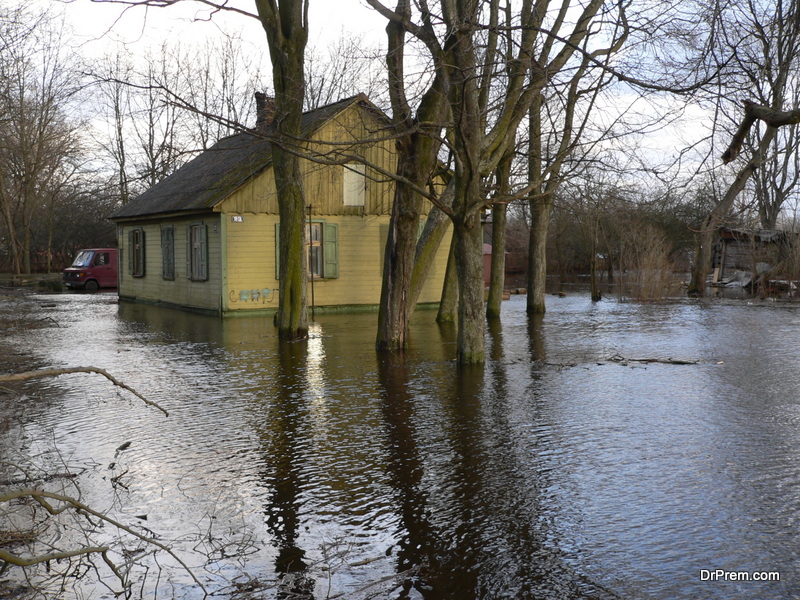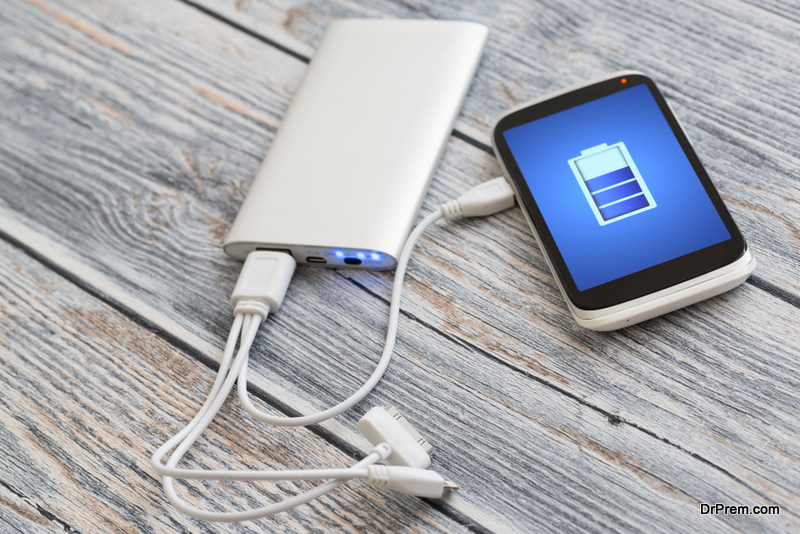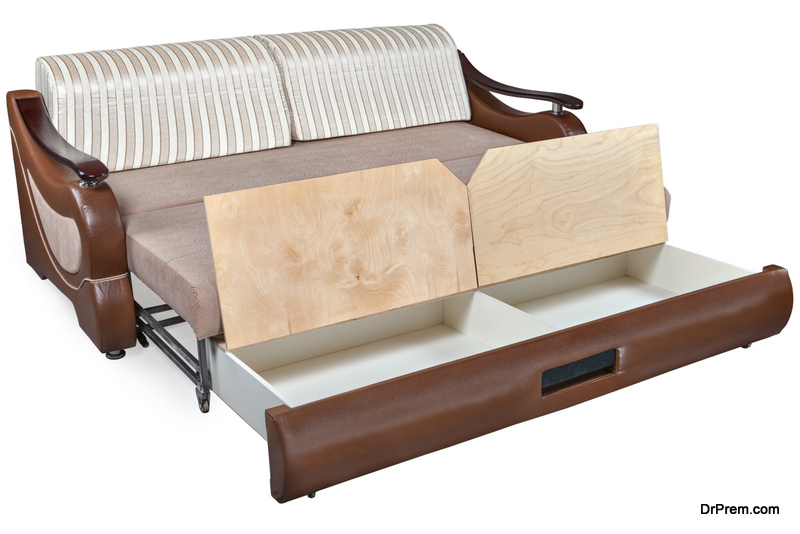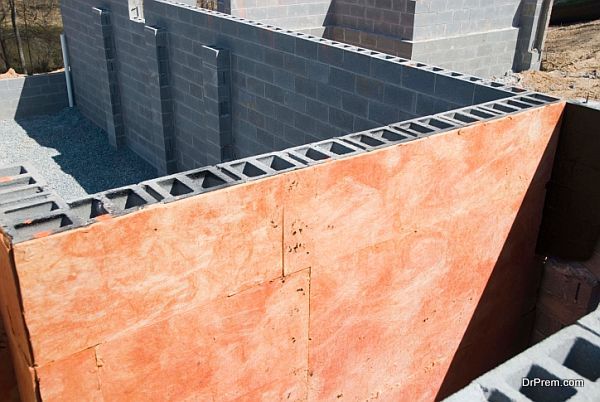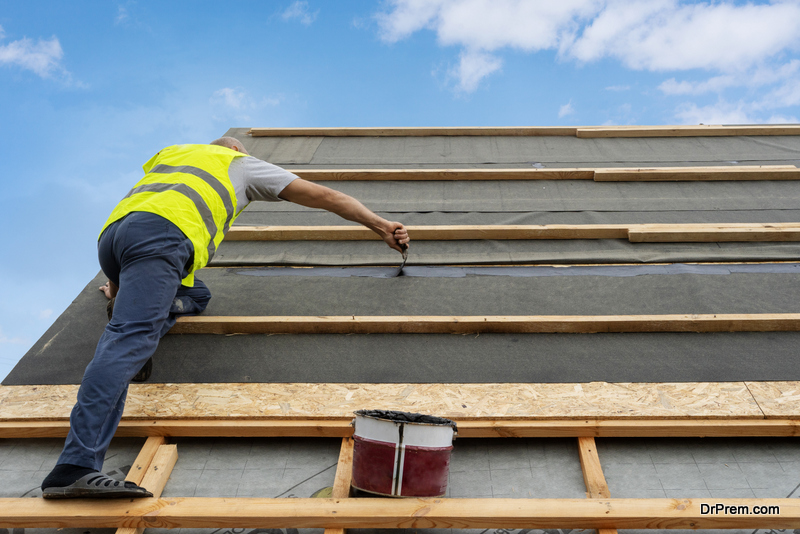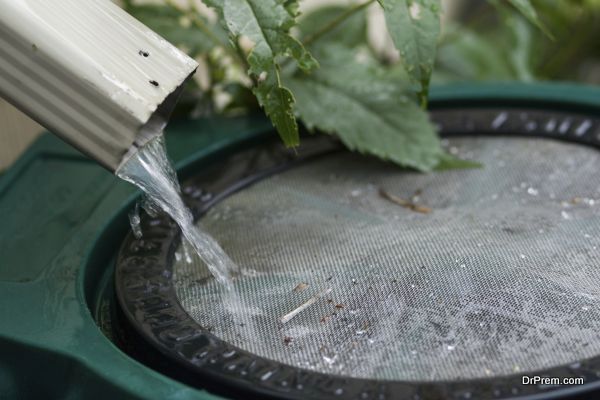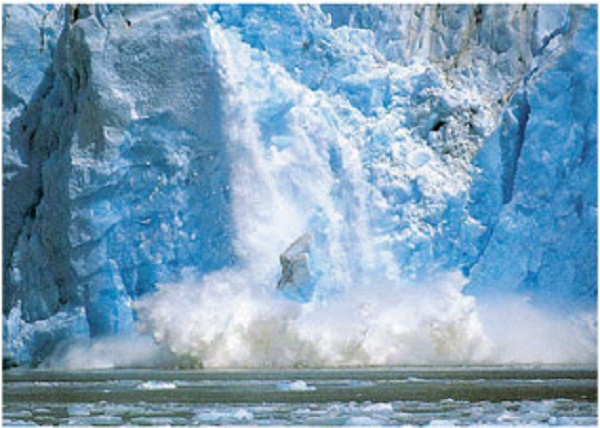In the regions experiencing high rainfall, floods are extremely common. They are much more common when you compare them to other massive natural disasters like earthquakes. However, they are also easy to predict. That is why, if tackled systematically, they don’t usually result in that many losses of lives. On the other hand, they lead to an immense loss of property, which is especially more significant in rural areas. Moreover, because of floods, people have to face severe inconvenience for a very long duration. Therefore, it isn’t just enough to have flood-proof houses, in addition, you should also learn how to create flood shelter for your village, just in case the situation takes a bad turn.
City Flood Shelter vs Village Flood Shelter
1. Difference in type of floods
Floods disrupt lives both in villages and cities, albeit in a slightly different way. In cities, floods usually happen in and around the coastal areas and especially in cities with a poor drainage system. However, in villages, floods usually happen in the areas that lie around some river.
2. Cities are better prepared for emergencies
As far as emergency relief is concerned, it is far more active in cities than in villages, where due to better communication, people also get an early warning regarding the disaster.
3. In cities it is easier to find provisions
In cities, it is much easier to prepare for the disaster. You just have to make a list, go to the nearest supermarket, where you are very likely to find pretty much everything. In villages, however, the situation isn’t that easy. People there rely mostly on home produce or the nearest grocery stores, which, in many cases, aren’t that near.
4. You need to prepare early in villages
Therefore, considering all these factors, when it comes to village flood shelters, you need to prepare early. In addition, if your region lies in a flood-prone region, then you should keep a certain minimum supply ready during the rainy season.
Turning your village house into flood shelter
When the flood isn’t that severe or when it has affected a small portion of your house, you can turn the entire house or a room on the first floor into a flood shelter. Here’s all you need to do for that:
1. Have minimum emergency provisions ready with you
During the flood season have at least one-week worth stock of emergency food at your house. These could include but are not limited to mineral water, potatoes, canned meat, canned vegetables, energy bars, multivitamins, peanut butter, dried fruits, powdered milk, or any other food item that doesn’t spoil easily. Store them in a clean and dry place and make sure that you select a place that stays so even during a flood.
Once you are done with these, take care that you have the following things in your house.
- Power banks
- Torches
- Solar chargers (if possible)
- First aid kit
- Biodegradable plastic bags (for keeping the waste)
- Battery Powered Radio
- Hygiene products (like soap, toothpaste, toilet paper, etc.)
Once you are certain that the disaster is imminent, you can add more to the supply. However, keeping this supply in one of the top rooms of the house is a good way to tackle emergencies.
2. Check the daily weather forecast
Make it a habit to tune in to your radio or television or just find some website that shows daily weather news of your region. In case, it shows that there are chances of floods in your region then don’t just keep that news to yourself but spread it around. After this, depending upon the severity of the alert, get into action.
3. Move personal belongings to safety
If you live in a flood prone region, we advise you to keep foldable beds and chair or furniture that are easy to move. Not only moving them to the first floor would save them from flood damage, but they might also make your stay above more comfortable. In addition to these, you should also move any valuable items, documents, books, electronics or anything that is prone to flood damage.
4. Move other useful items
As a final step, take the other useful items to the room. These might include medicines, cellphones, sleeping bags, etc. Furthermore, since you might be spending quite a lot of time in your safety room, it’d be also better to take some card games or your chess set with you.
Creating a village flood shelter
While it is better to stay home, but in certain cases it isn’t possible. Sometimes the flood takes too long to subside or the houses might not be able to handle it. In such cases, it’s better to construct a flood shelter at a place which is completely safe from the reaches of the flood. It is a must in regions that frequently suffer from floods. Here is how you can construct one:
Select a proper space
1. It should be high and safe
 Find out the highest recorded flood level in your region. After that, select a region that stays at least higher than that. Furthermore, make sure that the region is also safe from other rain accompanying hazards like a landslide, rockfalls, etc.
Find out the highest recorded flood level in your region. After that, select a region that stays at least higher than that. Furthermore, make sure that the region is also safe from other rain accompanying hazards like a landslide, rockfalls, etc.
It’s always better to select a region that’s on top of a hill and you should avoid one that lies at its slopes. In fact, one in the valley would also suffice.
2. Make sure that there’s proper drainage
Water can accumulate almost anywhere. In case of heavy rainfall, you might not be safe at higher grounds as water accumulates pretty much everywhere. Therefore, first of all, you should select a region that has proper water drainage. Second, if the drainage isn’t good enough, you should try to dig out one.
3. Build flood shelter on a firm ground
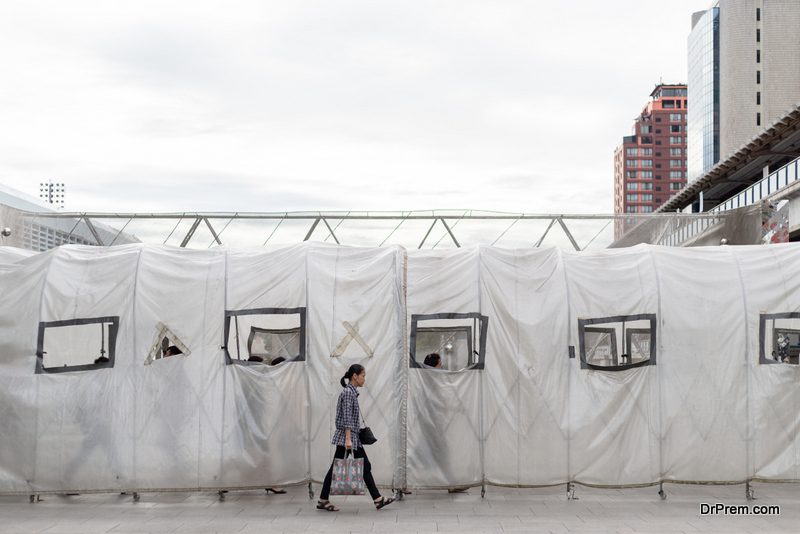 Don’t build the flood shelter on a ground that can’t bear the brunt of heavy rain. If the ground on which you are building is not firm enough, that would make it easier for the building to collapse. Staying at such a flood shelter would be worse than staying at your home. So, select a strong ground for the foundation of your shelter. Take advice from a civil engineer if you have to, but don’t make any compromises.
Don’t build the flood shelter on a ground that can’t bear the brunt of heavy rain. If the ground on which you are building is not firm enough, that would make it easier for the building to collapse. Staying at such a flood shelter would be worse than staying at your home. So, select a strong ground for the foundation of your shelter. Take advice from a civil engineer if you have to, but don’t make any compromises.
4. Have an evacuation route
In case the situation takes too long to become normal, you would surely like to leave your village. So, make sure that you explore the region in and around the flood shelter. Mark a proper evacuation route from there.
5. Grow plants around the flood shelter
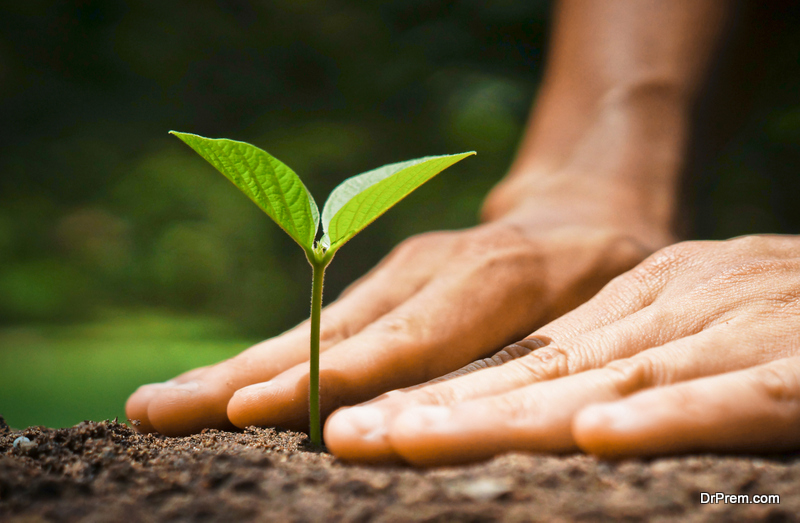 Plants hold the soil together and prevent any type of erosion. In addition, plants also act as barriers against the surging water. Having them around your flood shelter would further safeguard it from the action of rain and flood.
Plants hold the soil together and prevent any type of erosion. In addition, plants also act as barriers against the surging water. Having them around your flood shelter would further safeguard it from the action of rain and flood.
How to construct to a village flood shelter
1. Choose Water Resistant Building Material
This is the first and most important part. Since the shelter isn’t something you might be using throughout year, you would want to save as much money on it as possible. Nevertheless, you should never choose building material that’s very vulnerable to water damage. You can use materials like recycled water-resistant lumber, concrete bricks, steel, etc.
2. Build a stable foundation
- Provide Drainage: If you are constructing your building on firm ground, it’s highly likely that your foundation would be good enough, but it’s always better to be safe than sorry. You can make sure that the foundation of the building stays firm by proper drainage around it. This can be easily achieved by constructing downpipes and gutters. To save the foundation from water pressure, you should build the drainage as near to the foundation as possible. Otherwise, water from around the foundation would get below it and might make it collapse.
- Provide Depth: Foundations that aren’t deep enough are highly likely to get damaged by water runoff. They would make it easier for you building to topple. Therefore, you should make sure that the foundations are deep enough.
- Protect it with plastic: You can further protect the foundation of the building by putting plastic sheets around it.
3. Have water-resistant walls
If the material of your walls isn’t water-resistant, you should provide a water-resistant coating over it. You can do so easily by applying to the wall a mixture of fine and coarse sand mortar. In addition, you should have the doors and windows on the opposite sides of the walls. In the case of emergency, these would provide easy passage to the flash floods.
4. Construct the building on stilts
If you observe the design of flood-proof houses or most of the houses in the coastal region, you would find that they are built on stilts. These provide easy passage of water and save your flood shelter from excessive water pressure.
5. Pay special attention to the roofs
Since rains from above are the biggest threat to your building, you should divert it far away from the building using water-resistant roof designs. Either add gutters to your roof or make sure that the roof is so long that it doesn’t allow rain to reach your building structure.
6. Final Touches
As a final touch, you should take measurements of all the building components and see if they are good enough. If not, then make proper modifications. For example, having more opening in your buildings would be highly beneficial for the building. Among other things, do not forget to make your building fire safe too.
Maintaining your village flood shelter
Since you might not be using this flood shelter very often, it is important that you maintain it from time to time. You should inspect it yourself every second week and you should ask some civil engineer to inspect it at least a week before the rainy season. Repair the building if necessary. For example, if you think that the present length of the roof isn’t good enough, feel free to get it extended.
A great idea to put your flood shelter in good shape is by utilizing it for some other normal use. This would prevent you from neglecting it. If you have a building material that is locally available, you can use it to repair the building from time to time.
Utilizing rainwater for drinking
While you are stranded on your building surrounded by rain, you might face a drinking water crisis. Although rainwater is drinkable too, but only before it touches any building or a plant. However, if it’s boiled on top of it then it’s good to go. By attaching rain barrels to the opening of the gutters of your flood shelters, you can obtain plenty and more rainwater for drinking, cooking, etc.
Make an eco-friendly choice
Resources might be scarce in your region or might be too expensive for you to afford. In such cases, you can opt for an eco-friendly design for your building. Repurposed construction materials, building waste and eco-friendly building materials like sandbags and straw bale could be of great use. You can even use things like bamboo to construct pipes or roof gutters.
The best way is to collect such materials throughout the year so that by the time construction begins, you don’t have to spend much money.
Prevention is better than cure
Human population has multiplied four times in the last 100 years. The last five years were the hottest ever recorded on this planet. No wonder all these factors have their effects on the frequency of floods as well.
In fact, floods are just one half of the picture, the second half is droughts. The case of Chennai proves how the same place could be alternately be affected by both in a matter of just a few months.
While we might not be able to change everything, there’s always a lot that we can do. For this, however, first of all, we would have to take climate change seriously.


